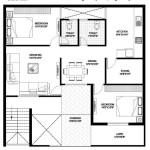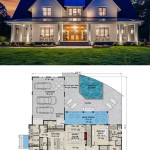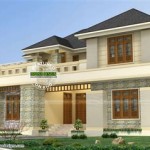Floor Plans of Modular Homes: Design, Flexibility, and Customization
Modular homes, also known as prefabricated homes, are constructed off-site in a controlled factory environment and then transported to the building site for assembly. This construction method offers several advantages, including faster build times, cost efficiency, and quality control. A critical aspect of planning and designing modular homes is the floor plan. The floor plan dictates the layout of the home, its functionality, and overall appeal. This article will explore the various considerations, options, and design aspects influencing floor plans in modular home construction.
Understanding the Modular Construction Process and its Impact on Floor Plans
The modular construction process significantly shapes the possibilities and limitations surrounding floor plan designs. Unlike traditional stick-built homes, modular homes are assembled from individual modules. These modules are typically rectangular or square in shape, determined by transportation restrictions and factory production capabilities. The dimensions of these modules impact the overall floor plan design as the modules need to be combined seamlessly to create the desired living space.
When designing a floor plan for a modular home, it is essential to consider the module sizes offered by the manufacturer. Standard module sizes are available, but some manufacturers may provide custom module dimensions. Understanding these parameters allows architects and designers to create floor plans that maximize space utilization and minimize the need for extensive on-site modifications. The fewer modifications needed at the site, the more cost-effective and faster the construction process becomes.
Furthermore, the connection points between modules also play a crucial role in the design. These connection points need to be structurally sound and weather-tight. Often, these areas are ideal locations for load-bearing walls, which can influence the placement of rooms and hallways within the overall floor plan. Designers must carefully consider these structural requirements to ensure the integrity and stability of the assembled home.
Exploring Common Modular Home Floor Plan Styles
Modular home construction offers a wide range of floor plan styles to accommodate various lifestyles and preferences. While modular construction is often associated with simple, boxy designs, advancements in technology and manufacturing processes have enabled the creation of complex and aesthetically pleasing floor plans. Some common floor plan styles include:
Ranch Style: Ranch-style modular homes are characterized by their single-story design and open floor plans. These homes typically feature a long, low profile and a simple roofline. Ranch-style floor plans are ideal for individuals or families seeking accessibility and ease of movement throughout the home. The open layout promotes a sense of spaciousness and allows for seamless transitions between living areas.
Two-Story Homes: Two-story modular homes provide ample living space on a smaller footprint. These floor plans typically feature bedrooms and bathrooms on the upper level and living areas on the main level. Two-story homes are well-suited for growing families or individuals who need additional space for work or hobbies. The vertical design maximizes land utilization, making it a popular choice in areas with limited space.
Cape Cod Style: Cape Cod-style modular homes are known for their symmetrical façade, steep rooflines, and dormer windows. These homes often feature a cozy and charming aesthetic, reminiscent of traditional New England architecture. Cape Cod floor plans typically include a central chimney, a living room on one side of the entry, and a dining room or kitchen on the other side. The upper level often features bedrooms with sloped ceilings and dormer windows.
Modern and Contemporary Designs: Modular construction also allows for the creation of modern and contemporary floor plans. These designs often feature clean lines, open spaces, and large windows that maximize natural light. Modern modular homes may incorporate sustainable features such as solar panels, energy-efficient appliances, and green building materials. The flexibility of modular construction enables architects and designers to create unique and innovative floor plans that reflect contemporary design trends.
Beyond these common styles, modular home construction also supports a range of architectural styles, including Colonial, Craftsman, and Farmhouse designs. The key lies in the manufacturer's capabilities and the level of customization offered.
Key Considerations When Choosing a Modular Home Floor Plan
Selecting the right floor plan for a modular home involves careful consideration of several factors, including lifestyle, budget, site conditions, and local building codes. Evaluating these aspects ensures that the chosen floor plan meets the homeowner's needs and preferences while adhering to regulatory requirements.
Lifestyle: The homeowner's lifestyle should be a primary consideration when choosing a floor plan. Factors such as family size, hobbies, work habits, and entertaining preferences will influence the optimal layout and features of the home. For example, a family with young children may prioritize a floor plan with a large, open living area for playtime and family gatherings. Individuals who work from home may require a dedicated office space. Understanding these lifestyle needs will guide the selection of a floor plan that supports the homeowner's daily activities.
Budget: The budget plays a significant role in determining the size and complexity of the modular home floor plan. Larger floor plans with intricate architectural details will typically cost more than smaller, simpler designs. It is essential to establish a realistic budget and prioritize the features that are most important to the homeowner. Working closely with the modular home manufacturer or builder can help to identify cost-effective options and potential areas for savings.
Site Conditions: The building site can influence the suitability of certain floor plans. Factors such as the size and shape of the lot, the slope of the land, and the soil conditions can impact the foundation requirements and the overall orientation of the home. For example, a sloping lot may require a split-level or walkout basement design. Understanding the site conditions and working with a qualified engineer or surveyor can help to ensure that the chosen floor plan is compatible with the building site.
Local Building Codes: Modular homes must comply with all applicable local building codes and regulations. These codes address various aspects of construction, including structural integrity, fire safety, energy efficiency, and accessibility. It is essential to work with a modular home manufacturer or builder who is familiar with the local building codes and can ensure that the chosen floor plan meets all regulatory requirements. Failure to comply with building codes can result in delays, fines, and even the rejection of the home.
Customization Options: Even within the modular construction framework, a significant degree of customization is usually possible. Homeowners should explore the customization options offered by the manufacturer, including modifications to the floor plan, changes to the exterior finishes, and upgrades to the interior features. Some manufacturers offer a wide range of customization options, while others have more limited flexibility. Understanding the available customization options will empower homeowners to create a modular home that truly reflects their personal style and preferences.
Modular home floor plans offer a versatile and efficient approach to home construction. By understanding the modular construction process, exploring various floor plan styles, and carefully considering key factors such as lifestyle, budget, site conditions, and building codes, prospective homeowners can make informed decisions and create a modular home that meets their unique needs and preferences. The flexibility and customization options available in modular construction allow for the creation of beautiful, functional, and affordable homes that blend seamlessly with the surrounding environment.

Modular Home Floor Plans Gordon S Homes

Modular House Plans Modularhomeowners Com

Choosing The Best Floor Plan For Your Modular Home Next

Floor Plans Austin Tx Modular Homes

Modular Home Floorplans Next 574 334 9590

Top Five Most Popular Modular Home Floor Plans

Modular Homes Floor Plan Model 9561

Floor Plans Finish Werks

Lee Floor Plan Modular Homes Austin

Modular Floor Plans Signature Building Systems








